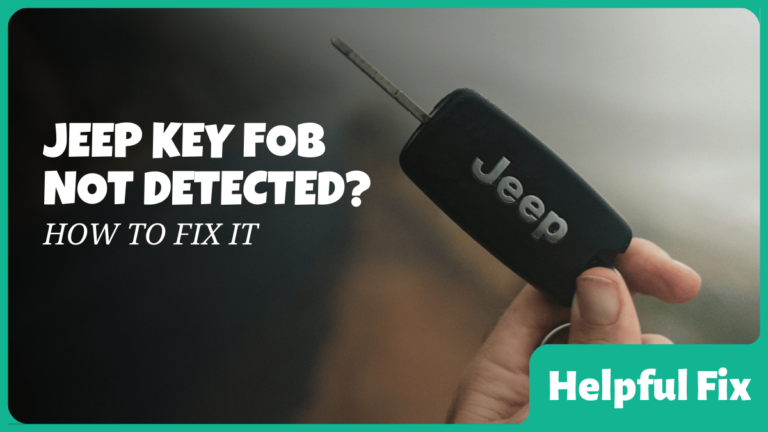How to Unlock a Jeep Cherokee with Keys Inside
When a Jeep Cherokee doors lock with the keys inside, it creates an urgent situation that can quickly escalate into a costly or time consuming problem. This guide consolidates common issues, prevention strategies, and a range of unlocking options from do it yourself methods to professional tools. It covers model specific notes, safety warnings, and step by step instructions to help you get back in quickly and safely.
Quick summary
- Status check: Confirm the keys are definitely inside the vehicle and not on a separate ring in your pocket or bag.
- Prevention is best: Use the fob to lock doors, keep a spare key, and verify you have the keys when exiting.
- DIY methods exist but carry risk: Coat hanger and air wedge approaches can work but may damage seals or electrical systems if done improperly.
- Professional options: Lockout tools and trained locksmiths reduce damage risk and are quickest on modern Cherokee models.
- Model variations matter: Some methods work better on certain years and trims; the Cherokee family spans multiple generations with different locking mechanisms.
- Aftermarket alarms complicate unlocking: If the vehicle has an aftermarket system, it may interfere with standard unlock attempts.
- Safety first: Avoid aggressive force, broken glass, or prying that could trigger airbags or electrical faults.
- Model specific notes: Some techniques are demonstrated on Cherokee models between 2014 and 2016; others come from older Grand Cherokee examples.
Common issues and root causes
- The most frequent scenario. The door locks engage, and the interior is inaccessible from outside.
- Additional security systems can prevent conventional unlock attempts from succeeding.
- A faulty door lock actuator or latch can trap the lock position or resist external entry attempts.
- A dead key fob battery can cause the doors not to respond to remote unlocks, creating confusion about whether the keys are actually inside.
- Different Cherokee generations use different door hardware and lock mechanisms, which changes the effectiveness of DIY methods.
Prevention and preparedness
- Exiting discipline: Always exit with the keys in your possession; use the fob to lock doors rather than manual locking when feasible. Jeep guidance emphasizes planning to avoid lockouts.
- Spare key strategy: Keep a spare key secured in a safe location or with a trusted contact. Consider a magnetic key holder only if you trust the mounting location and weather exposure.
- Keyless habits: If your model supports passive entry, ensure you understand how to reenable it after changing the fob battery or performing maintenance.
- Test the fob: Periodically check that the remote unlock works consistently; replace batteries as needed.
Unlocking techniques
Coat hanger method (DIY)
The coat hanger method is a classic DIY approach that uses a rigid wire to manipulate the interior lock mechanism through the doorjamb. It requires patience and a careful touch to avoid damaging weather stripping or the window seal.
- Obtain a thin, sturdy wire coat hanger. Remove any coatings that could snag on the door frame.
- Completely straighten the hanger to form a single long rod with a small hook at the end.
- Locate a workable entry point at the door jam above the interior lock mechanism, typically near the crease where the weather stripping meets the door frame.
- Carefully insert the wire, maintaining the angle so you can feel for the locking rod or latch. Do not force the tool through tight gaps.
- Gently maneuver the hook to engage or depress the locking mechanism. Apply steady pressure and return to the handle to see if the door releases.
- If you encounter resistance, adjust the angle and try again. Stop if you hear unusual sounds or resistance that could indicate damage.
Note: The coat hanger method may take time and can risk cosmetic or weather seal damage if done aggressively. It is most effective when there is a small, accessible gap and a straightforward lock rod. For safety and reliability, consider professional alternatives when possible. See demonstrations of this method in public tutorials to understand the technique better.
Air wedge and inflatable tools (DIY or with professional guidance)
The air wedge method uses an inflatable bag to create a controlled gap between the door and the frame. This gap provides space to insert a reach tool or to access the interior lock mechanism without prying the door open aggressively. A widely referenced approach uses an air bag like the Access Tools super air jack.
- Choose an appropriate air wedge or lockout kit that fits your vehicle. For Cherokee models, inflating tools can create a safe gap without crushing the weather seal.
- Insert the air wedge into the seam between the door and the frame at the weather stripping level. Position it to avoid the window and power components.
- Slowly inflate the bag to create roughly a 1/2 inch gap. Do not exceed recommended pressure to prevent window or frame damage.
- Slide a thin reach tool or lockout bar through the gap to manipulate the interior latch or connect to the exterior unlock rod. Move carefully to avoid tearing seals.
- Once unlocked, carefully remove the wedge and open the door using the interior handle or the unlocked latch.
Video demonstrations show this technique applied to Cherokee models and similar SUVs, with emphasis on the controlled expansion of the gap and careful tool insertion. Always follow the tool manufacturer’s instructions and observe safety precautions to avoid injury or vehicle damage. See a practical walkthrough via a step by step video guide.
Professional lockout tools and locksmith services
Professional lockout technicians carry specialized tools and training that reduce the risk of damage. They use long reach tools, professional-grade inflatables, and diagnostic checks to ensure the vehicle electronics and airbags remain intact. This route is fastest for many modern Cherokee configurations and is recommended when DIY attempts are uncertain or have failed.
Professional unlocks are particularly advisable if the vehicle has an aftermarket alarm or immobilizer, as these systems can interfere with basic unlocking attempts. If time is not on your side, call roadside assistance, your dealership, or a licensed locksmith who specializes in automotive entry.
Model-specific considerations
Model year and trim influence which techniques are most effective. Some Cherokee generations respond best to air wedge methods, while older Grand Cherokee models may require more delicate approaches to avoid compromising interior assemblies. For example, historical demonstrations show different approaches for certain generations, including a technique involving a horizontal linkage tool on older Grand Cherokee variants. This method is not recommended for beginners due to the fragility of linkages and potential interior damage. When possible, rely on model-specific guidance and, if in doubt, opt for professional help. See model specific demonstrations to understand how tools interact with distinctive door assemblies on Cherokee variants.
Safety warnings and cautions
- Damage risk: Forcing windows or doors can crack glass, tear weather seals, or damage electrical harnesses. Proceed with great care.
- Airbag system: Do not manipulate the door near airbag modules or deploy zones; accidental deployment can cause injury.
- Aftermarket alarms: These systems can alter the door lock behavior and the effectiveness of DIY approaches. Confirm compatibility before attempting entry.
- Legal and safety considerations: Only unlock vehicles you own or have explicit permission to access. If you’re locked out on a public road or public space, prioritize safety and call for assistance.
Frequently Asked Questions
What should I do first if the keys are inside the Jeep Cherokee?
Stay calm and assess your options. If you have a spare key or a remote unlock, use it. If not, consider calling roadside assistance or a locksmith. If there is immediate danger or risk of exposure to weather, seek professional help quickly to minimize damage and risk.
Can I use a coat hanger to unlock my Cherokee?
Yes, but it is a high‑risk DIY method. It can work if you have a small gap and a suitable technique, yet it can damage weather seals or trim if done forcefully. Use as a last resort and know that many professionals will recommend safer methods first.
Will an aftermarket alarm interfere with unlocking?
Yes. Aftermarket alarms or immobilizers can prevent standard unlocking methods from working. If you suspect this is the issue, a locksmith or dealership familiar with your alarm system is the safest course of action.
Is breaking a window ever justified to regain entry?
Only in a true emergency where lives or critical safety are at risk. Breaking a window is expensive and dangerous, and should be considered a last resort after all safer options have been exhausted. Call emergency services if someone is at risk.
Should I call a locksmith or roadside assistance?
For most modern Cherokee models, a locksmith or roadside assistance service is the fastest and safest option. They have trained technicians and the proper tools to minimize damage while regaining entry.
Do these methods apply to all Jeep Cherokee generations?
Not universally. While many techniques are adaptable, some generations use different lock mechanisms. Always verify compatibility with your specific model year before attempting a method. Refer to model specific demonstrations when available.
How can I prevent future lockouts?
Keep a spare key in a secure location, use the fob to lock doors, and verify keys before leaving the vehicle. Consider enrolling in a roadside plan that provides quick lockout assistance and storing emergency contact details with a trusted person.
What if I have to wait for help?
Keep the vehicle locked, stay safe, and stay with the car if you are in a safe location. If heat or cold is a concern, seek shade or warmth while you coordinate assistance. Have your VIN and vehicle details ready for the technician to speed up service.







